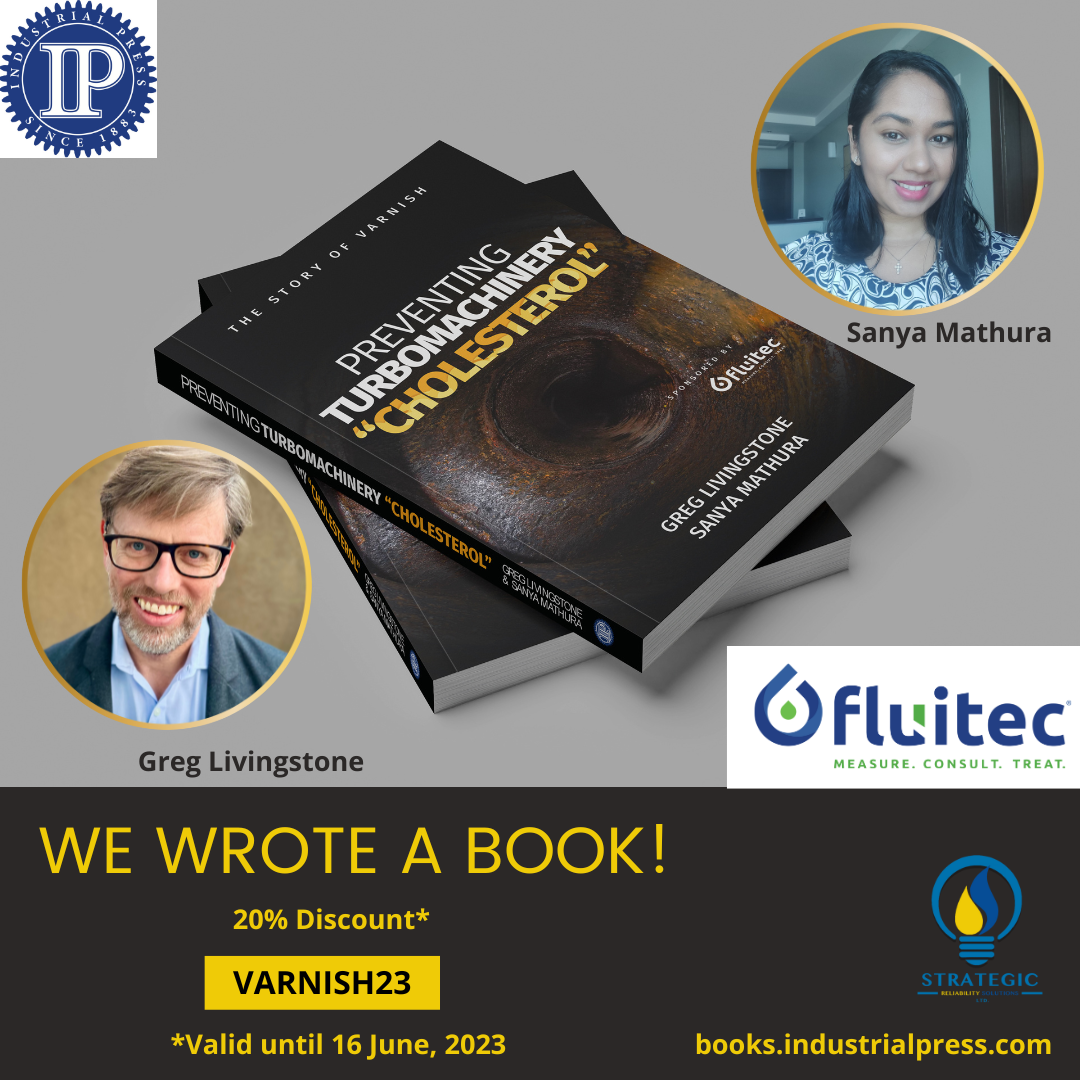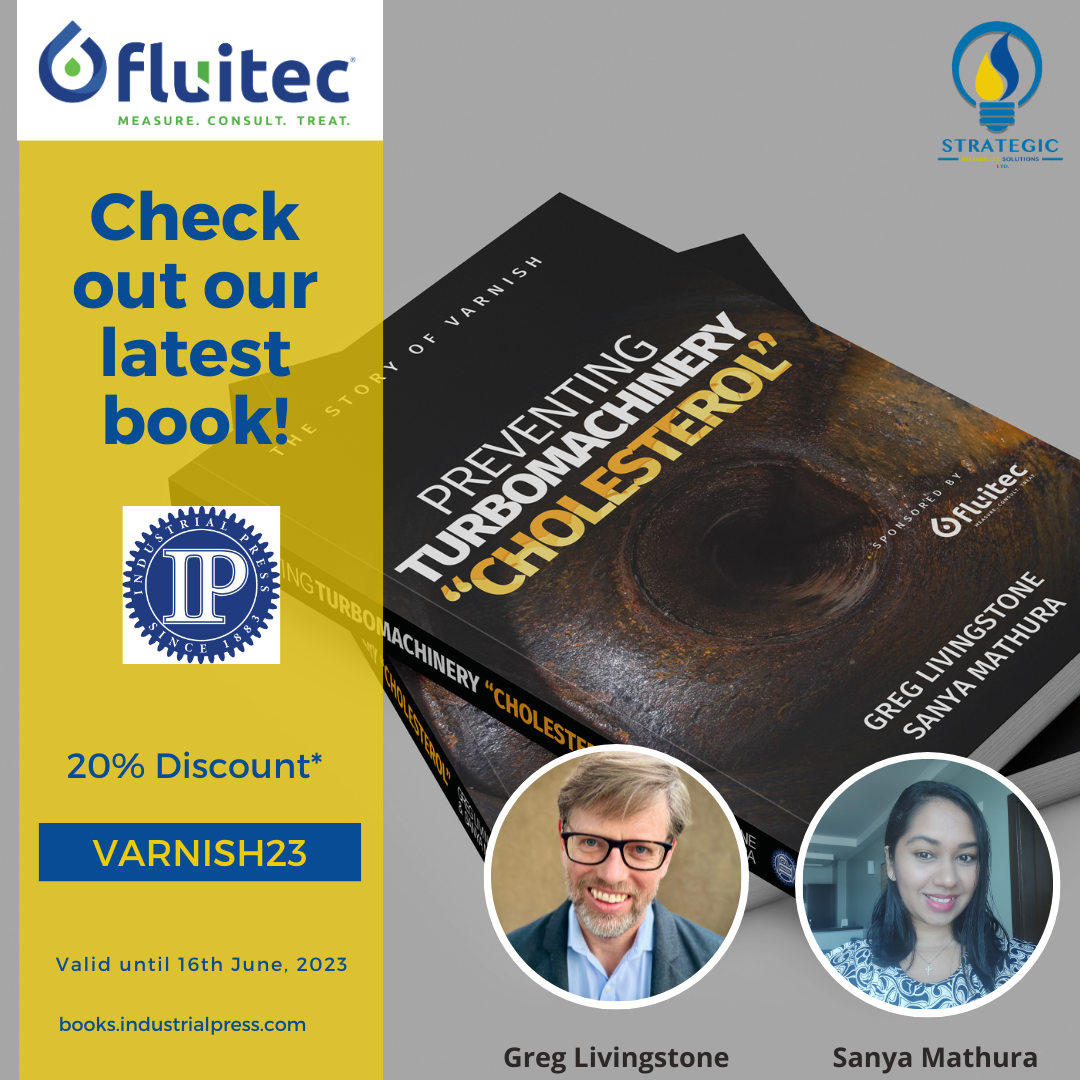Preventing Turbomachinery "Cholesterol" - The Story of Varnish
by Greg Livingstone & Sanya Mathura
Preventing Turbomachinery “Cholesterol” was written to address the misconceptions related to varnish, help readers understand its composition and evolution, dispel some of the myths surrounding varnish and deposits, detect its presence, discover the impact of varnish as it relates to flow restriction, and shed some light on the effect on efficiency, heat transfer, and lubricant properties.
It provides tangible and actionable steps to alleviate varnish obstacles, particularly on bearing operations. There is also one chapter solely devoted to achieving sustainable lubrication, as this is the future of the industry.
Features
- Discusses the processes of oxidation, thermolysis, contamination, microdieseling, electrostatic discharge, hot spots, additive drop out, hydrolysis, and other varnish mechanisms.
- Focuses on proactive methods that can be used to minimize oil breakdown, including managing temperature, the benefits of water removal, and ways to manage antioxidant depletion.
- Covers technologies that can help prevent deposits, such as the implementation of depth media filtration, centrifugal separation, electrostatic precipitation and agglomeration, solubility enhancers and chemical flushes.
- Includes two sample tests (50 questions each) for the ICML’s VPR and VIM certifications, along with answers and explanations.
Table of contents
Chapter 1: The Basics of Varnish
Chapter 2: Problems Associated with Varnish and Deposits
Chapter 3: Factors Affecting Breakdown
Chapter 4: Proactive Methods That Can Be Used to Minimize Oil Breakdown
Chapter 5: Methods and Technologies to Prevent Deposits
Chapter 6: Benchmarking Turbine Oils
Chapter 7: Oil Analysis Techniques for Varnish
Chapter 8: Achieving Sustainable Lubrication
Bonus Chapter 9: Preparing for ICML VPR and VIM Badges.


